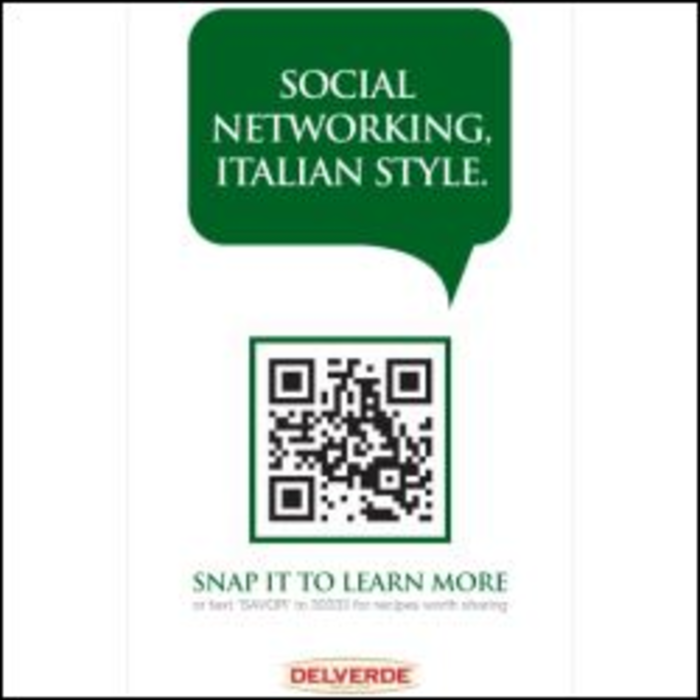As marketers look for fresh ways to engage with customers through new technologies, companies like Best Buy, Sports Illustrated, Kodak and Calvin Klein are experimenting with the use of QR, or 2D codes, in their marketing. These short-form codes, which can be scanned by a special reader on a smartphone, often link to product information or exclusive materials such as videos.
The QR code is also making its way to the retail shelf as a sort of interactive packaging, or in the case that we’ll look at today, shelf advertising.
Delverde Pasta, a nearly 50-year-old Italian artisan pasta brand, is testing QR codes with its customers in a small mobile campaign it rolled out to New York retailers last week. Shelf talkers in D’Agostino stores in New York will prompt shoppers to either snap a QR code or text a key word to a short code. Customers are then offered Delverde recipes that match specific interests, including formal or romantic dining and wine pairings.
The limited mobile test precedes what the company expects to be a more robust brand refresh, including a larger mobile campaign, in 2011. This test will help the company, which was acquired by Argentina consumer packaged goods firm Molinos Rio de la Plata SA last year, position for the rebrand and apply what it learns from this campaign, explained Dolores Marianeschi, Delverde’s marketing manager in the US and Canada.
“We want to communicate in a modern way, and we want to be able to surprise our customers in a different way and give them something of value,” she added.
Delverde is sold at a number of grocers nationwide as well as globally, including Ralph’s, Bristol Farms, Shaw’s and King’s. It chose to implement the QR code test at D’Agostino because it was a new account for the pasta maker and because of its demographics, said Marianeschi.
“We feel we can leverage the gourmet enthusiasts in Manhattan, and at the same time, we wanted to offer D’Agostino a good proposition,” she said. “As a premium brand, our main target customers are smartphone users, so this mobile strategy makes a lot of sense for us.”
Delverde enlisted Maryland-based branding and package design specialists Harvey & Daughters earlier this year to aid its 2011 relaunch. The agency then hired Augme Technologies to implement the technology-side of the mobile campaign. David Apple, CMO of Augme said the vendor often suggests that clients pursue a test campaign.
“A lot of our clients are CPGs and they’re having a tough time navigating mobile,” he said. “We always recommend doing some sort of beta program because there are learnings on both sides from the customer and for the brand.”
In terms of measurement, Augme’s analytics will show Delverde’s marketing team how many customers download the codes, how many opt for the SMS portion of the campaign, from which stores customers are scanning the QR codes and what their behaviors are within the mobile site, including time spent. In addition, Augme will match its existing 120 million consumer database to the customers that opt in to the campaign in order to build more specific user profiles.
“The goal moving forward, as we build this database for Delverde, is that they can trigger customer content back to the customer,” said Apple.
Marianeschi also noted that she will be looking at the stickiness factor of the campaign, whether customers are “sharing our content” and if they “get excited” about the recipes.








